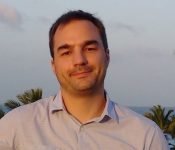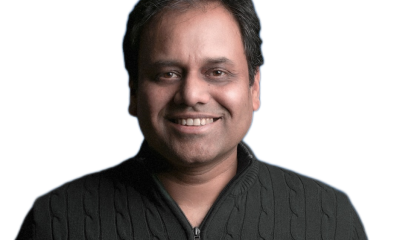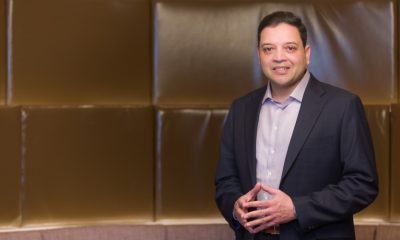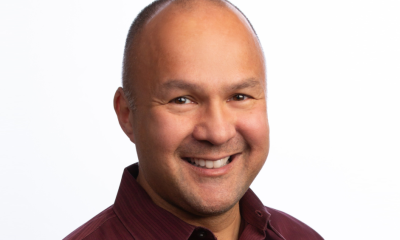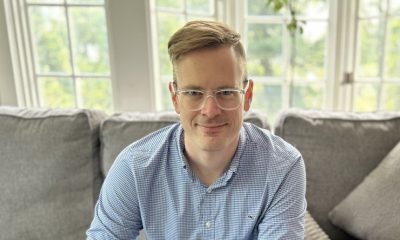Interviews
Jinhan Kim, CEO of Standigm – Interview Series

Jinhan Kim is the CEO of Standigm, a workflow AI drug discovery company.
From customized target identification to lead generation, the Standigm workflow AI platform generates the insights for every step to develop commercially valuable drugs from in-house and partnership projects.
You began coding when you were in 6th grade, could you share how you became interested and what you initially worked on?
Ah, yes – on my Apple II Plus. That was the catalyst for turning me from a bookworm to a creator. I began to program, starting with C programming, out of curiosity. I became interested in the principles and theoretical aspects of my computer. From there, I became a lifelong learner in the technology field.
What initially attracted you to machine learning?
I earned my degrees in applied chemistry and artificial intelligence at The University of Edinburgh under Geoffrey Hinton. He is the neuroscientist and computer scientist who basically created deep learning. Hinton worked on artificial neural nets and designed autonomous, intelligent machines – and, later, machine learning algorithms. Google hired him ten years ago to create their AI and the rest is history.
When did you initially first become involved in the intersection of biology and machine learning?
I used to work at the Samsung Advanced Institute of Technology, where I was developing algorithms. One of the algorithms I developed was a mechanism for repairing DNA damage. I wanted to pursue work in the field of biology and to solve the most difficult problems to target. Both the human body and computers that think like humans are about as complex as things get, and you need to work to understand one to grasp the other. AI systems can not only dig through extensive scientific data published over decades from around the world, but they can also process the complexities of the human body and quickly and coherently catch the patterns of biological mechanisms. It was easy to see biology and machine learning go hand-in-hand.
Could you share the genesis story behind Standigm?
My work in health and science revealed what, to me, was a big problem in traditional drug discovery: the time and money it took to scan scientific research papers and screening trials or the clues that provide the jumping-off point for potential new-drug creation. Human scientists were doing this intensive research. I and two Samsung colleagues, Sang Ok Song and So Jeong Yun, saw an opportunity to shift the work from humans to an intelligent machine and design a new workflow. Also, I did not want to work for a salary; I wanted to work for myself, to bring drug discovery methods to a new standard paradigm, which is the genesis of the work and the name of “Standigm,” the company that the three of us co-founded. Our machine learning model now achieves high prediction accuracy and its AI technology attains maximum ROI.
What is the synthetic accessibility problem and how does Standigm work to solve this?
Generative models can design novel molecular structures without the help of well-trained medicinal chemists, which is one of the most critical reasons for the enthusiastic adoption of this technology by drug discovery communities. The highest hurdle here is the difference in speed between the design of molecules and their experimental syntheses, where the design of millions of compounds takes only hours and the synthesis of only ten molecules takes weeks or months. As just a tiny fraction of designed compounds will be synthesized by human experts, it is essential to have good measures of molecular properties.
First-generation AI models were crude, and synthetic chemists refused most of the designed molecules due to the difficulty of the synthetic plan. Some CRO companies even refused to prepare a proposal for this synthetic campaign.
Standigm has been working on this issue by hiring experienced medicinal chemists and adding their expertise to generative models so they can design compounds that cannot be distinguished from those designed by human experts. Standigm now has several different generative models that can manage different drug discovery stages: hit identification, hit-to-lead and lead optimization. This shows the importance of having diverse expertise for any AI drug discovery company where human experience and expertise are mostly used to improve the AI models and to secure the best workflows instead of each project.
Can you discuss the types of algorithms that are used by Standigm to facilitate drug discovery?
We typically start any explorative projects by prioritizing promising and novel target proteins using Standigm ASK; our biology platform consists of distinct algorithms to train massive biological networks, utilize various types of unbiased omics data, introduce the specific contexts of biological systems and so on. Selecting the right target protein is one of the most critical issues in drug discovery. Standigm ASK helps disease experts by providing multiple hypotheses of MOA (mechanism of action).
To secure patents with highly protective ranges, Standigm BEST performs various tasks, including suggesting hit compounds (effective exploration), scaffold hopping (considering the synthetic accessibility and novelty) and various predictive models for drugabilities (activity, ADME/Tox properties and physicochemical properties). Many smaller tasks are related to these bigger ones, like DTI (drug-target interaction), AI-assisted molecular simulations, selectivity prediction and multi-parameter optimization.
How much time is saved on average when it comes to novel compound generation versus legacy drug discovery procedures?
Standigm researchers have synthesized hundreds of novel molecules for projects, many of which are designated as hit and lead molecules in different contexts. By adopting AI-based models and commercial resources, Standigm has reduced the time for the first round of novel compound generation from six months to an average of two months for most projects. Now, the first go/no-go decisions can be made in an average of seven months instead of three to four years.
What are some of the Standigm success stories for potential drug commercialization?
Using Standigm Insight, which shares the same technical background as Standigm ASK, we found a drug molecule that can be used for a rare pediatric disease, validated by a scientist from one of the best children's hospitals in the U.S. This case shows that AI technology can help with rare-disease drug discovery, a difficult task for a company of any size due to the need for more commercial value. Especially in this recession, when pharmaceutical companies try to be more conservative, AI can promote R&D in rare and neglected diseases.
What is your vision for the future of deep learning and generative AI in healthcare?
The success of AI technology depends on the availability of high-quality data. There will inevitably be great competition around securing a large amount of high-quality data in the healthcare sector. From a narrower perspective of early drug discovery, chemistry and biology data are expensive and require a long time to secure high-quality status. Therefore, the automated lab will be a future for the AI drug discovery field, as it can reduce the cost of high-quality data – the fuel for AI technology. We are pushing our technology platforms to the next level so that Standigm ASK can provide more apparent evidence, from patient-derived data to molecular biology; and so Standigm BEST AI models can be state-of-the-art by feeding high-quality data from in-house automated labs and collaborators.
Is there anything else that you would like to share about Standigm?
As the balance of differentiated expertise is important for Standigm, the balance of ethnicities is also critical. We have been expanding our presence in the global environment by founding the U.K. (Cambridge) and the U.S. (Cambridge, MA) offices to include the presence of the networks and the transformation of Standigm into a more international firm.
Thank you for the great interview, readers who wish to learn more should visit Standigm.
